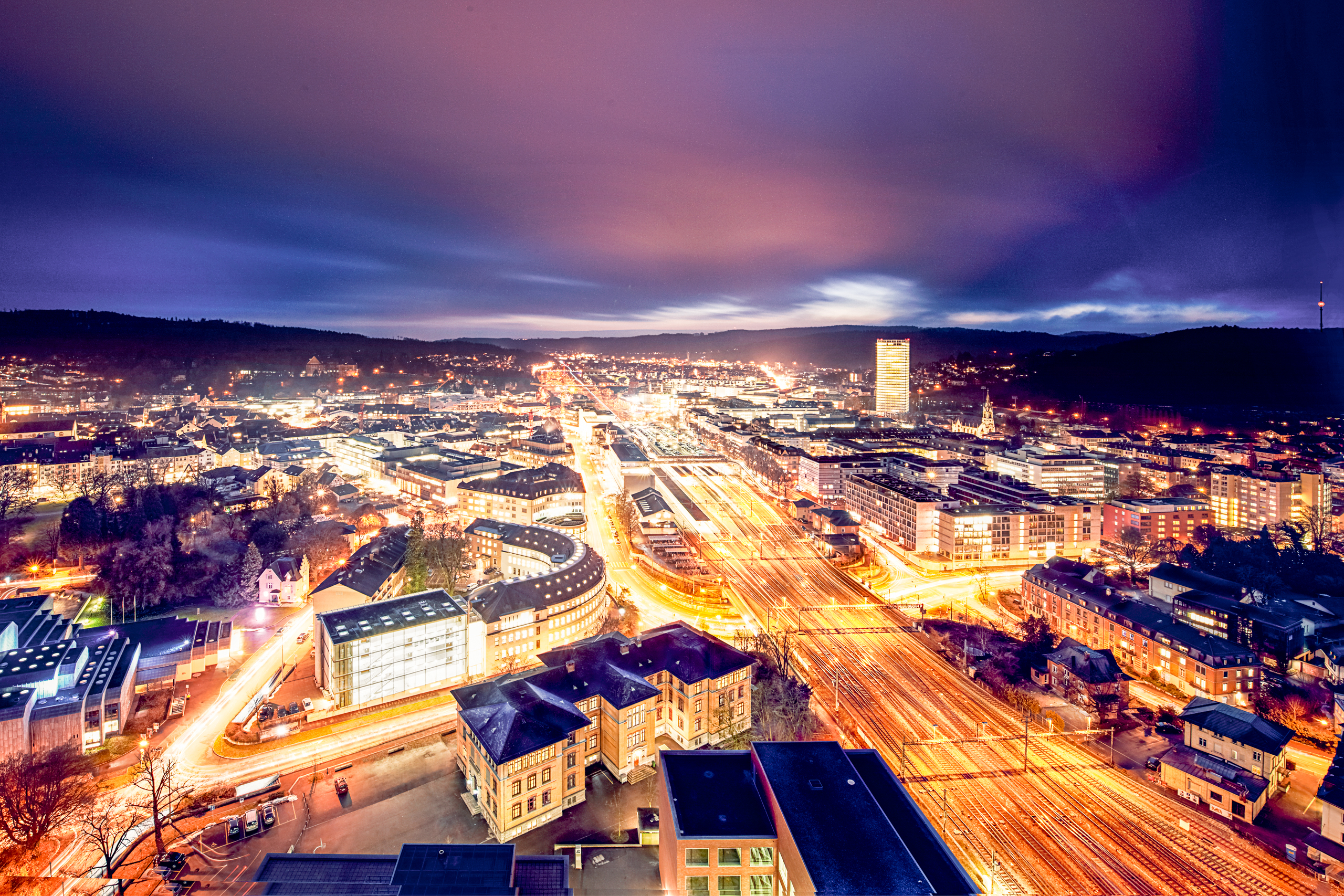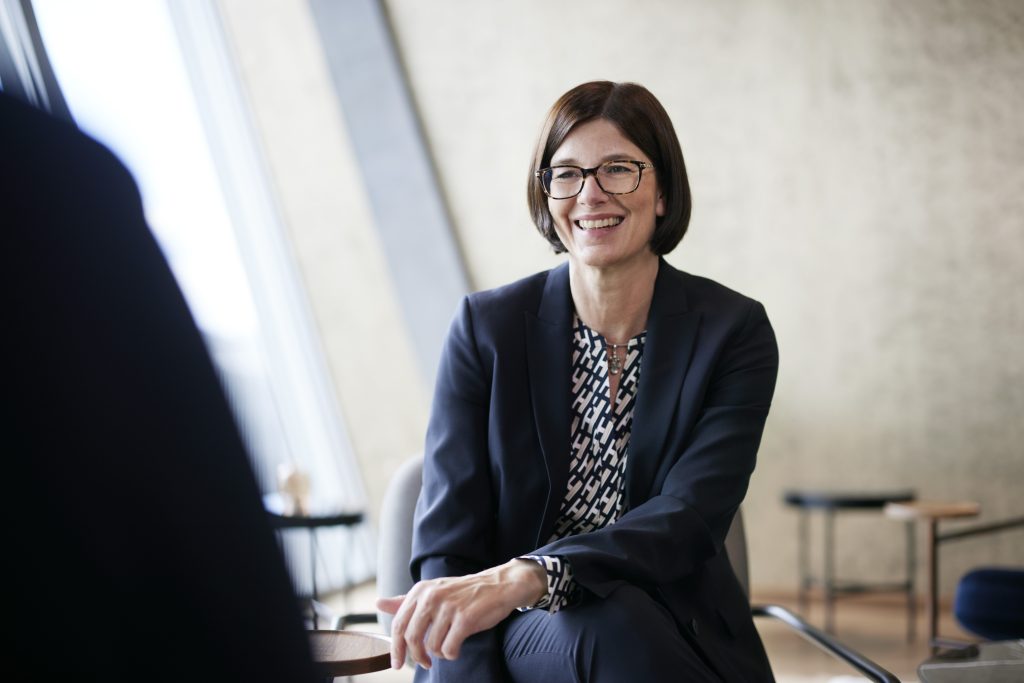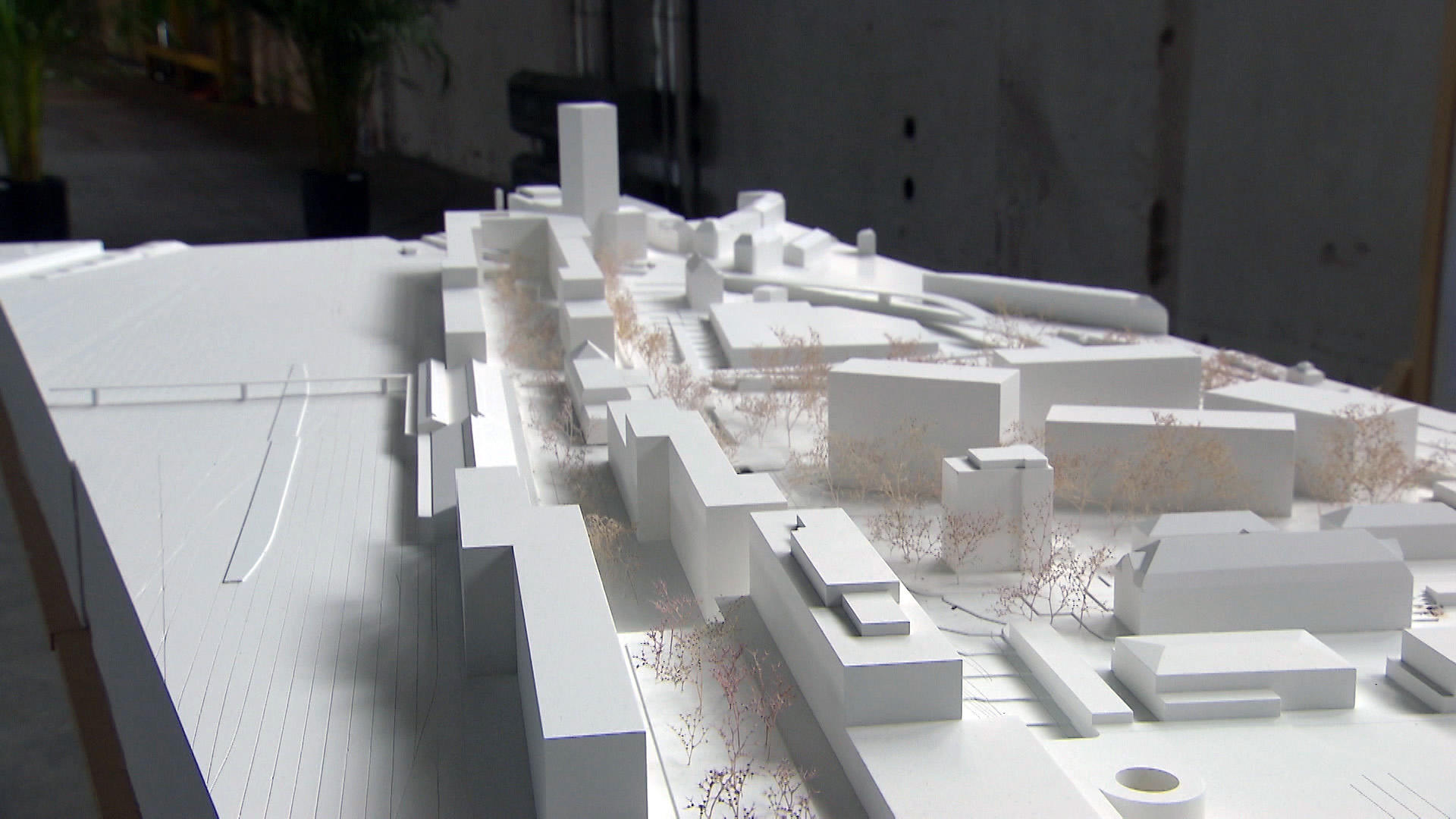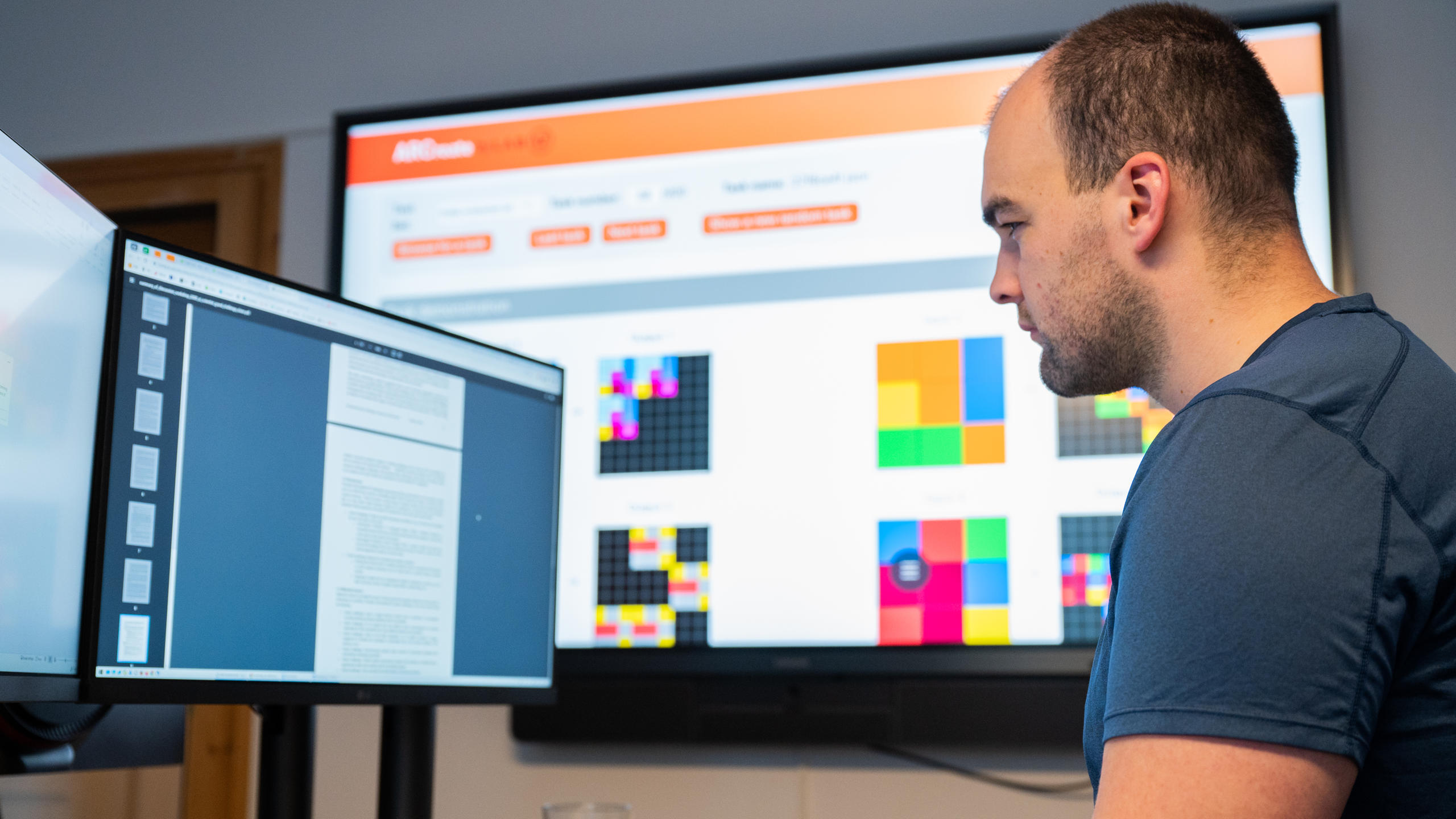How will AI shape our future cities?

From Zurich to Boston and Shanghai, more and more places are using “digital twins” to create a virtual version of the city to plan the urban experiences of tomorrow. But a lack of data means there’s still a gap between our visions and reality, which Swiss researchers are working on closing.
For city planners, a bird’s-eye view of a map showing buildings and streets is no longer enough. They need to simulate changes to bus routes or traffic light timings before implementation to know how they might affect the population. Now, they can do so with digital twins – often referred to as a “mirror world” – which allows them to simulate scenarios more safely and cost-effectively through a three-dimensional virtual replica.
Cities such as New York, Shanghai and Helsinki are already using digital twins. In 2022, the city of Zurich launched its own version. Anyone can use it to measure the height of buildings, determine the shadows they cast and take a look into the future to see how Switzerland’s largest city might develop. Traffic congestion, a housing shortage and higher energy demands are becoming pressing issues in Switzerland, where 74% of the population already lives in urban areas.
But updating and managing digital twins will become more complex as population densities and the levels of detail increase, according to architect and urban designer Aurel von Richthofen of the consultancy Arup.
The world’s current urban planning models are like “individual silos” where “data cannot be shared, which makes urban planning not as efficient as we expect it to be”, said von Richthofen at a recent event hosted by the Swiss innovation network Swissnex. Now, Swiss researchers have recognised these dilemmas and are trying to find solutions.
Digital twins rely on good data
The underlying data is key to whether a digital twin city is effective. But getting access to quality data from different organisations is extremely difficult. Sensors, drones and mobile devices may collect data in real-time. But they tend to be organised around different knowledge domains – such as land use, building control, transport or ecology – each with its own data collection culture and physical models.
Von Richthofen, who leads Arup’s Integrated Cities Planning team in Berlin, says it’s necessary to integrate different models and concepts to better address planning issues and create a more dynamic version of digital twins.
Together with researchers from the University of Cambridge and the federal technology institute ETH Zurich, von Richthofen launched the Cities Knowledge Graph project in 2021. It aims to collate, combine and share city-relevant data, from building plans to transport flows to underground infrastructure, with city dwellers and planners.
Each city is such a unique, vast and multifaceted system that it is difficult for city managers to have a comprehensive overview. “But our work will help city managers understand all the subsystems, their interactions and pathways,” von Richthofen said, likening their work to “drawing the unique fingerprint, taking the heartbeat and creating a holistic picture of each city”. He hopes the tool they are working on will also be useful for matching energy supply and demand to local grids, for example.
How virtual tools can make cities greener
Digital twins can also be used to reduce carbon emissions. Scandens, an ETH Zurich spinoff, recently developed a software solution for reducing the carbon footprint of large buildings.
In Switzerland, the building sector generates a fifth of the country’s greenhouse gas emissionsExternal link, and most buildings are still heated with oil or gas. “There are more and more regulatory requirements obliging building owners to accelerate decarbonisation,” said Scandens co-founder Kuba Szczesniak.
2022 marked a major shift in the country’s energy policy and building standards. The Swiss government’s Energy Strategy 2050 stipulates that Switzerland must reduce the energy consumption of Swiss buildings by 39% and achieve a net-zero emissions balance by 2050. The Swiss parliament also agreed on the so-called solar obligation, which requires that solar panels be installed on the roofs and façades of new buildings with an eligible floor area of more than 300 square metres.
In Geneva, energy-intensive buildings are already required to be renovated. The refurbishment obligation is phased in, with priority given to buildings with the highest energy consumption per unit of floor area. Canton Vaud, on the other hand, requires that all rental offers and contracts be accompanied by a building energy certificate and that the energy consumption of properties be reported in the public land register in order to achieve greater transparency.
Simulation software, such as that developed by Scandens, can help construction companies and property owners create digital twins of affected buildings. They can then simulate and calculate the energy performance and climate impact of each existing building by assessing heating and cooling systems and the potential impact of measures such as installing solar panels.
But Szczesniak says many property owners remain unaware of the benefits of digital twins. He and his team spend a lot of time explaining the concept to customers before collaboration begins.
“Education in promoting digital literacy and building trust in reliable technology is very important. Without that, people won’t trust the solutions that we provide,” he says.
‘Our experience of a place should not be ignored’: where digital twins have work
Not everyone is so confident in digital twins’ ability to balance limited resources and services in cities. Sohell SabriExternal link, an assistant professor and the director of Urban Digital Twin Lab at the University of Central Florida in USA, pointed out in an email to SWI swissinfo.ch that there is still a gap between the theoretical and practical use of digital twins in urban planning.
According to Sabri, the lack of data harmonization across different domains and the reluctance of many city departments to share their data are the most common barriers to the use of digital twins in cities.
A 2023 studyExternal link reached a similar conclusion: researchers from Singapore and the Netherlands looked at existing research and surveyed 52 international experts to identify the barriers to the use of digital twins in cities and to explore the reasons for the gaps between vision and reality. Data-related issues were identified most frequently – data is often not standardized, accessible or up-to-date. All of this is necessary so that a computer can analyze the data gathered in different domains such as traffic, disasters and air conditions (e.g. temperature, humidity, pollution) and then simulate a city’s traffic or energy consumption.
While today’s digital technologies, such as satellite imagery and aerial photography, can “measure the physical and functional characteristics of cities, the measurement of social construction and experience aspects is difficult,” Sabri also mentioned. The social aspects of urban digital twins – such as the place attachments, movements, habits and decisions of a city’s residents – have so far been less researched and are thus poorly understood.
“Cities are a combination of objective and subjective characteristics,” according to Sabri, our experience of a place should not be ignored. A digital twin of a city should be more than a clone.
Edited by Sabrina Weiss and Veronica DeVore

In compliance with the JTI standards
More: SWI swissinfo.ch certified by the Journalism Trust Initiative














You can find an overview of ongoing debates with our journalists here . Please join us!
If you want to start a conversation about a topic raised in this article or want to report factual errors, email us at english@swissinfo.ch.